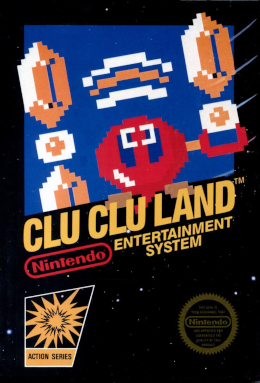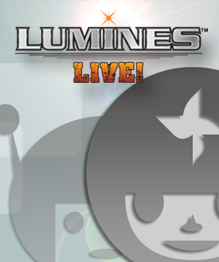This article needs additional citations for verification .(January 2019) |
| Part of a series on |
| Puzzles |
|---|
 |
This is a partial list of notable puzzle video games, sorted by general category.
This article needs additional citations for verification .(January 2019) |
| Part of a series on |
| Puzzles |
|---|
 |
This is a partial list of notable puzzle video games, sorted by general category.
Tile-matching video games are a type of puzzle video game where the player manipulates tiles in order to make them disappear according to a matching criterion. There are a great number of variations on this theme.
Puzzle pieces advance into the play area from one or more edges, typically falling into the play area from above. Player must match or arrange individual pieces to achieve the particular objectives defined by each game.
Block-shaped puzzle pieces advance onto the board from one or more edges (i.e. top, bottom, or sides). The player tries to prevent the blocks from reaching the opposite edge of the playing area.

Puzzle video games make up a broad genre of video games that emphasize puzzle solving. The types of puzzles can test problem-solving skills, including logic, pattern recognition, sequence solving, spatial recognition, and word completion. Many puzzle games involve a real-time element and require quick thinking, such as Tetris (1985) and Lemmings (1991).

A platformer is a sub-genre of action video games in which the core objective is to move the player character between points in an environment. Platform games are characterized by levels with uneven terrain and suspended platforms of varying height that require jumping and climbing to traverse. Other acrobatic maneuvers may factor into the gameplay, such as swinging from vines or grappling hooks, jumping off walls, gliding through the air, or bouncing from springboards or trampolines.

Yoshi is a fictional dinosaur who appears in video games published by Nintendo. Yoshi debuted in Super Mario World (1990) on the SNES as Mario and Luigi's sidekick. Throughout the mainline Super Mario series, Yoshi typically serves as Mario's trusted steed. With a gluttonous appetite, Yoshi can gobble enemies with his long tongue, and lay eggs that doubly function as projectiles. Yoshi is the title character of the Yoshi series and a supporting character in Mario spin-off games such as Mario Party and Mario Kart, as well as many Mario sports games. He also appears as a playable character in the crossover fighting game series Super Smash Bros. Yoshi is a member of the same-named species, which is distinguished for its wide range of colors.

Super Mario World 2: Yoshi's Island is a 1995 platform game developed and published by Nintendo for the Super Nintendo Entertainment System (SNES). It is the sequel follow-up to Super Mario World. The player controls Yoshi, a friendly dinosaur, on a quest to reunite baby Mario with his brother Luigi, who has been kidnapped by Kamek. As a Super Mario series platformer, Yoshi runs and jumps to reach the end of the level while solving puzzles and collecting items with Mario's help. The game has a hand-drawn aesthetic and was the first in the franchise to have Yoshi as its main character, where it introduces his signature flutter jump and egg spawning abilities.

Tetris Attack, also known as Panel de Pon in Japan, is a puzzle video game developed by Intelligent Systems and published by Nintendo for the Super Nintendo Entertainment System. A Game Boy version was released a year later. In the game, the player must arrange matching colored blocks in vertical or horizontal rows to clear them. The blocks steadily rise towards the top of the playfield, with new blocks being added at the bottom. Several gameplay modes are present, including a time attack and multiplayer mode.

Wario is a character in Nintendo's Mario video game series that was designed as an archnemesis to Mario. Wario first appeared as the main antagonist and final boss in the 1992 Game Boy game Super Mario Land 2: 6 Golden Coins. His name is a portmanteau of the name Mario and the Japanese word warui, meaning "bad". He is usually portrayed as a greedy treasure hunter who routinely loses the treasure or artifacts he ultimately finds. Since his debut, he has appeared in the majority of Mario video games. Hiroji Kiyotake designed Wario, and Charles Martinet voiced the character from 1993 to 2023.

Clu Clu Land is a puzzle video game developed and published by Nintendo in 1984 in Japan for the Famicom. It was released in North America in 1985 as a Nintendo Entertainment System launch game and in Europe in 1987. Nintendo has rereleased it many times via emulation.

Mario & Wario is a puzzle video game developed by Game Freak and published by Nintendo for the Super Famicom. It was released exclusively in Japan in 1993. Mario & Wario requires the Super Famicom Mouse accessory to play. Despite being a Japan-only release, the game is entirely in English.

The Super NES Mouse, sold as the Super Famicom Mouse in Japan, is a peripheral created by Nintendo for the Super Nintendo Entertainment System. It was released in 1992, on July 14 in Japan, in August in North America, and on December 10 in Europe. Originally designed for use with the game Mario Paint, the Super NES Mouse was sold in a bundle with the game and included a plastic mouse pad. Soon after its introduction, several other titles were released with Mouse support.
The Nintendo Player’s Guides are a series of video game strategy guides from Nintendo based on Nintendo Power magazine.

Smart Bomb is a timed puzzle video game for the PSP developed by Core Design. It was one of the first video games to be released on the PSP and was at first set to be a big game, yet many control flaws and repetition of levels meant that it was a relatively low selling game. This is the last game Core Design worked on before it was renamed Rebellion Derby the following year; R.D. would close its doors in March 2010.
Yoshi's Island DS, known in Japan as Yoshi Island DS, is a 2006 platform game developed by Artoon and published by Nintendo for the Nintendo DS. It was released in North America and Australia in November 2006, in Europe in December 2006, and in Japan in March 2007. It is a sequel to the 1995 SNES game, Super Mario World 2: Yoshi's Island. Announced at Nintendo's E3 press conference in May 2006, the game was well received by critics, scoring an average of 81% on Metacritic's aggregate. The game was originally to be titled Yoshi's Island 2, though its name was changed one month before its North American release. In April and May 2015, the game was made available for the Wii U via the Virtual Console service, shortly after a Nintendo Direct presentation.

Lumines Live! is a 2006 puzzle video game developed by Q Entertainment for the Xbox 360. It was released in Europe in October 2006, in North America in January 2007, and in Japan in March 2007. The objective of the game is to move and rotate 2×2 blocks to form colored squares of the same color. Points are awarded to the player when the Time Line erases the colored squares. Lumines Live! introduces online multiplayer, Xbox Live achievements, and a leaderboard.

Wario is a video game series, a spin-off of the Mario franchise. It comprises various video games created by Nintendo, starring the character Wario. The series began with Wario Land: Super Mario Land 3, the first game to feature Wario as a playable character. The Wario series includes mostly platforming video games and minigame compilations, but also includes other genres.
Puyo Puyo (ぷよぷよ), previously known as Puyo Pop outside Japan, is a series of tile-matching video games created by Compile. Sega has owned the franchise since 1998, with games after 2001 being developed by Sonic Team. Puyo Puyo was created as a spin-off franchise to Madō Monogatari, a series of first-person dungeon crawler role-playing games by Compile from which the Puyo Puyo characters originated. The series has sold over 10 million copies, including the Madō Monogatari games.

A tile-matching video game is a type of puzzle video game where the player manipulates tiles in order to make them disappear according to a matching criterion. In many tile-matching games, that criterion is to place a given number of tiles of the same type so that they adjoin each other. That number is often three, and these games are called match-three games.

Faraway: Puzzle Escape is an escape the room puzzle video game developed by Pine Studio for iOS and Android platforms. The game is available as free-to-try and has been compared to the Myst video game series. The updated Director's Cut edition of Faraway was released on Steam for the PC in a first for the series on 4 March 2021.
The Nintendo Gateway System is a version of the Super Nintendo Entertainment System, Game Boy, Game Boy Color, Game Boy Advance, Nintendo 64, or GameCube that was installed on some Northwest, Singapore Airlines, Air China, Air Canada, Alitalia-Linee Aeree Italiane, All Nippon Airways, British Midland International, Kuwait Airways, Malaysia Airlines, Thai Airways, and Virgin Atlantic passenger aircraft, as well as certain hotels with LodgeNet, NXTV, or Quadriga, from late 1993 up until the late 2000s.